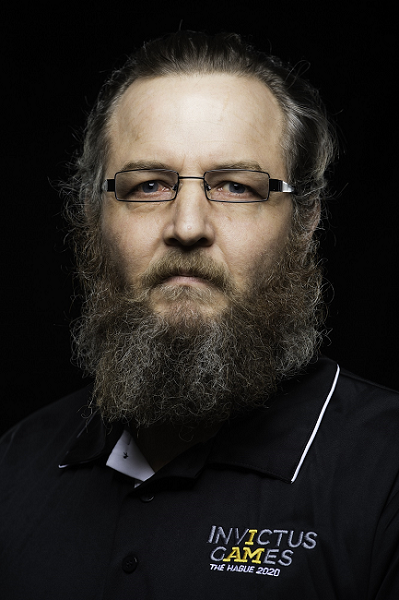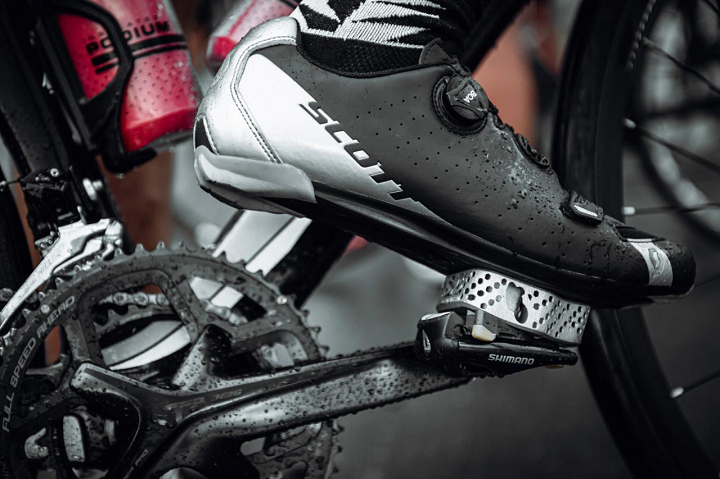From kayak paddle grips and surf prosthetics to racing wheelchairs and the gloves with which to race them, 3D printing can help fabricate adaptive and assistive devices for athletes. This was the case recently for Stevin Creeggan, a New Zealand Defence Force (NZDF) veteran who was the only survivor of a helicopter crash ten years ago north of the country’s capital of Wellington. As a result of the incident, he suffered self-fused vertebrae in his neck and lower back, along with a very damaged right leg—held together with screws, rods, and plates—that’s now 2.5 cm shorter than the left.
Creeggan was having a hard time keeping in shape after the crash, and eventually began cycling. In fact, he will compete in archery, cycling, and wheelchair basketball events at next year’s Invictus Games, founded by Prince Harry six years ago for injured current and former service personnel. He would have competed at the event in May, but COVID-19 forced a 2021 reschedule.
To fill the gap between the pedal and his shorter right leg, Creeggan made a spacer for himself, and while it’s effective, it’s definitely not lightweight. Enter 3D printing.
“I first used bog; the material that panel beaters use when they fill a dent in a car. It’s strong but very heavy,” Creeggan said about his self-built spacer. “I spoke to my Invictus sports team manager, David Pilgrim, who took it to the NZDF engineering design team without me knowing. When I found that out you could have knocked me over with a feather, I was so surprised!”

L-R: Martin Campbell and Ewan Conaghan, NZDF engineers adjusting the PLA 3D printed prototype to
ensure good form and fit.
NZDF mechanical engineers Martin Campbell and Ewan Conaghan received the request to make a more resilient and lightweight solution. Conaghan said it was an unusual one, as the design engineering team usually deals with parts for military vehicles, but they were happy to take the project on.
“We are mechanical engineers, but people will knock on our door with all sorts of ideas,” he said. “As soon as we saw David’s request, we knew immediately that 3D printing was the way to go.”
Campbell was especially excited, as he is also a cyclist.
“I have a long history with pushbikes and when this job came in, I jumped at the chance, it was just made for me,” he said.
The first thing they tried was designing and printing some carbon fiber prototypes to bring the weight down. Creeggan’s existing spacer and shoe cleat weighed a total of 250 grams, which Campbell stated was “ridiculously heavy.”
“…so one of our primary tasks was to work out how to significantly reduce its weight, whilst maintaining its strength and resilience to the outdoors,” Campbell continued. “With GE’s additive technology, using titanium we were able to reduce the weight to 50 grams which was just great for Stev and the design is specific to his shoe.”
Auckland manufacturer Zenith Tecnica, which has 3D printed adaptive equipment for athletes in the past, used its GE Additive Arcam electron beam melting (EBM) Q10plus system to print the final design out of titanium.
“We only had to suggest a few small tweaks to get to the final design and it allowed us to get the most out of the additive technology,” Zenith’s technical manager, Peter Sefont, said.
The company typically makes parts for the aerospace, medical, and marine industries, so this project was new for them as well.
“Our GE Additive EBM machines are certified to 3D print titanium aerospace and medical parts,” explained Sefont. “We make quite a few customized patient specific implants and prosthetics, as mass customisation is one of the key benefits to 3D printing, but the pedal spacer and cleat is not something we have manufactured before so it was great to be a part of it.”
Creeggan is very pleased with his new 3D-printed titanium spacer and cleat.
“I have had quite a few comments on how beautiful the design is and questions as to how it keeps its strength. A lot of people don’t realize there is a spacer there at first and that’s a testament to 3D printing technology and titanium,” the cyclist said.
“The design team found that sweet spot in the middle of being light, functional and strong. My right leg is now ergonomically correct so it is now at the point where I can stand up to pedal and I have trust in my leg and my bike to push harder than I have been able to before. I am now doing 23 kilometers in 30 minutes in the track criterium, up from 18 kilometers.”
With the extra confidence the 3D-printed solution has given him, Creeggan is excited to continue cycling and training for the Invictus Games.
“Since the accident, the spacer and cleat have been the biggest game changer for me for sport or anything else,” he said. “I had the chance to go in and say thank you to the design team and their pride in helping to create something for me on my Invictus journey just blew me away. It was awesome.”
(Images provided by GE Additive)
Subscribe to Our Email Newsletter
Stay up-to-date on all the latest news from the 3D printing industry and receive information and offers from third party vendors.
You May Also Like
3D Printing Unpeeled: New Arkema Material for HP, Saddle and Macro MEMS
A new Arkema material for MJF is said to reduce costs per part by up to 25% and have an 85% reusability ratio. HP 3D HR PA 12 S has been...
3D Printing News Briefs, January 20, 2024: FDM, LPBF, Underwater 3D Printer, Racing, & More
We’re starting off with a process certification in today’s 3D Printing News Briefs, and then moving on to research about solute trapping, laser powder bed fusion, and then moving on...
3D Printing Webinar and Event Roundup: December 3, 2023
We’ve got plenty of events and webinars coming up for you this week! Quickparts is having a Manufacturing Roadshow, America Makes is holding a Member Town Hall, Stratafest makes two...
Formnext 2023 Day Three: Slam Dunk
I’m high—high on trade show. I’ve met numerous new faces and reconnected with old friends, creating an absolutely wonderful atmosphere. The excitement is palpable over several emerging developments. The high...



































